Latest Blogs
ड्राई फ्रूट खाने के 8 अद्भुत फायदे
सूखे मेवे निश्चित रूप से एक स्वादिष्ट स्नैक विकल्प हैं। लेकिन जानते हो? वे सबसे अधिक पौष्टिक और स्वास्थ्यवर्धक स्नैक्स में से एक हैं! हाँ, और सूखे मेवों के इन सभी स्वास्थ्य लाभों के साथ, चुनने के लिए कई अलग-अलग किस्में हैं, इसलिए आप अपनी स्वाद कलियों के लिए एकदम सही विकल्प पा सकते हैं। इसलिए यदि आप एक स्वस्थ नाश्ते की तलाश में हैं जो आपको संतुष्ट महसूस कराए, तो कुछ सूखे फल अवश्य लें! अभी तक आश्वस्त नहीं? सूखे मेवे खाने के कुछ अनगिनत उल्लेखनीय फायदे यहां दिए गए हैं। पोषक तत्वों का महान स्रोत सूखे फल पोषक तत्वों, विशेषकर फाइबर से भरपूर एक स्वस्थ और सुविधाजनक नाश्ता है। फाइबर एक महत्वपूर्ण पोषक तत्व है जो हमें स्वस्थ रखने में मदद करता है, हृदय स्वास्थ्य और रक्त शर्करा नियंत्रण में भी लाभ पहुंचा सकता है। सूखे फल में ताजे फल की तुलना में अधिक विटामिन और खनिज होते हैं, जो इसे पोषण बढ़ाने का एक शानदार तरीका बनाता है। हालाँकि, सूखे फल को कम मात्रा में खाना आवश्यक है, क्योंकि इसमें चीनी और कैलोरी की मात्रा अधिक हो सकती है। सूखे फल चुनते समय, बिना चीनी वाले या केवल हल्के मीठे वाले विकल्पों की तलाश करें, और अतिरिक्त चीनी के लिए लेबल की जाँच करें। थोड़ी सी योजना के साथ, सूखे मेवे आपके आहार का एक पौष्टिक और स्वादिष्ट हिस्सा हो सकते हैं। हीमोग्लोबिन का बढ़िया स्रोत सूखे मेवों का एक बड़ा लाभ यह है कि वे हीमोग्लोबिन-निर्माण और आयरन का एक अच्छा स्रोत हैं, यही कारण है कि यह एनीमिया के खिलाफ लड़ाई में सहायक हो सकता है। इसमें फोलिक एसिड जैसे अन्य आवश्यक पोषक तत्व भी होते हैं, जो नई लाल रक्त कोशिकाओं और विटामिन सी का उत्पादन करने में मदद करते हैं, जो आयरन के अवशोषण में सहायता करते हैं। सूखे फल ऊर्जा और आवश्यक पोषक तत्वों को बढ़ावा देने का एक आसान तरीका है, जिससे यह एनीमिया से पीड़ित या एनीमिया के खतरे वाले लोगों के लिए एक उत्कृष्ट नाश्ता बन जाता है। यदि आप आयरन सप्लीमेंट लेते हैं तो अपने सूखे फलों का सेवन सीमित करना सुनिश्चित करें, क्योंकि बहुत अधिक आयरन हानिकारक हो सकता है। कैंसर को रोकने में मदद करता है शोध से पता चलता है कि सूखे फल कैंसर को रोकने में भी मदद कर सकते हैं। अध्ययनों से पता चला है कि नियमित रूप से सूखे खुबानी खाने से डिम्बग्रंथि के कैंसर के खतरे को कम करने में मदद मिल सकती है। इसके अलावा, सूखे फल को कोलन कैंसर से बचाने में भी मददगार पाया गया है। उच्च फाइबर सामग्री पाचन तंत्र को स्वस्थ रखने में मदद करती है, जबकि एंटीऑक्सिडेंट सूजन को कम करने में मदद करते हैं। इसलिए यदि आप कैंसर को रोकने में मदद करने के लिए एक स्वस्थ नाश्ते की तलाश में हैं, तो कुछ सूखे फल लें। अपनी हड्डियों को मजबूत करें सूखे मेवे आपकी हड्डियों को मजबूत बनाने के लिए एक स्वस्थ और स्वादिष्ट भोजन स्रोत हैं। वे हड्डियों के स्वास्थ्य के लिए आवश्यक विटामिन, खनिज और एंटीऑक्सीडेंट से भरपूर हैं। उदाहरण के लिए, सूखे खुबानी कैल्शियम का एक अच्छा स्रोत हैं, जो मजबूत हड्डियों के लिए आवश्यक है। सूखे आलूबुखारे में मैग्नीशियम और पोटेशियम भी उच्च मात्रा में होते हैं, ये दो खनिज हड्डियों के घनत्व के लिए महत्वपूर्ण हैं। इसके अलावा, सूखे फल सूजन को कम करने और कोशिका क्षति को रोकने में मदद कर सकते हैं। परिणामस्वरूप, प्रतिदिन एक मुट्ठी सूखे फल खाने से आपकी हड्डियों को स्वस्थ और मजबूत रखने में मदद मिल सकती है। वजन घटाने को बढ़ावा दें सूखे फल वजन घटाने को बढ़ावा देने में मदद कर सकते हैं। ताजे फल के विपरीत, जिसमें अक्सर चीनी और कैलोरी अधिक होती है, सूखे फल में चीनी और कैलोरी कम होती है। इसके अलावा, सूखे मेवे फाइबर का एक अच्छा स्रोत हैं, जो खाने के बाद आपको भरा हुआ और संतुष्ट महसूस कराने में मदद करते हैं। इन कारणों से, सूखे मेवों को अपने आहार में शामिल करना वजन कम करने का एक प्रभावी तरीका हो सकता है। सूखे फल चुनते समय, ऐसी किस्मों का चयन करें जो बिना चीनी वाली हों या केवल हल्की मीठी हों। और अपने हिस्से के आकार पर ध्यान देना सुनिश्चित करें, क्योंकि इसके केंद्रित स्वाद के कारण सूखे फल को अधिक खाना आसान है। हालाँकि, थोड़ी योजना और संयम के साथ, सूखे फल किसी भी वजन घटाने की योजना का स्वादिष्ट और स्वस्थ हिस्सा हो सकते हैं। याददाश्त में सुधार करता है याददाश्त के संबंध में, कुछ चीजें स्वस्थ आहार से भी अधिक महत्वपूर्ण हैं। एंटीऑक्सिडेंट और ओमेगा-3 फैटी एसिड से भरपूर खाद्य पदार्थ मस्तिष्क की शक्ति को बढ़ाने और संज्ञानात्मक गिरावट से बचाने में मदद करते हैं। सूखे मेवे इन पोषक तत्वों को आपके आहार में शामिल करने का एक शानदार तरीका है। किशमिश में मौजूद एंटीऑक्सिडेंट मस्तिष्क को क्षति से बचाने में मदद करते हैं, जबकि ओमेगा -3 फैटी एसिड स्वस्थ कोशिका कार्य का समर्थन करते हैं। खुबानी, अंजीर और खजूर जैसे अन्य सूखे फल भी इन पोषक तत्वों से भरपूर होते हैं और स्वस्थ आहार के हिस्से के रूप में इसका आनंद लिया जा सकता है। त्वचा की गुणवत्ता में सुधार करता है सूखे फल में स्वस्थ त्वचा के लिए आवश्यक पोषक तत्व होते हैं, जिनमें विटामिन ए और सी, एंटीऑक्सिडेंट और फाइबर शामिल हैं। बस मुट्ठी भर किशमिश या खुबानी आपकी त्वचा को निखार सकती है, इसकी बनावट और रूप को बेहतर बनाने में मदद कर सकती है। इसके अलावा, सूखे फल में मौजूद प्राकृतिक शर्करा त्वचा को एक्सफोलिएट करने, उसे नरम और अधिक चमकदार बनाने में मदद कर सकती है। तो, अगली बार जब आप ऐसे नाश्ते की तलाश में हों जो आपकी त्वचा के लिए अच्छा हो, तो अस्वास्थ्यकर जंक फूड के बजाय कुछ सूखे फल खाएं। आपकी त्वचा आपको धन्यवाद देगी! स्वस्थ बाल जबकि अधिकांश लोग बालों के स्वास्थ्य के संबंध में जामुन और अन्य ताजे फलों के बारे में सोचते हैं, सूखे फल भी उतने ही फायदेमंद हो सकते हैं। उदाहरण के लिए, सूखे खुबानी बीटा-कैरोटीन का एक अच्छा स्रोत हैं, जिसे शरीर विटामिन ए में परिवर्तित करता है। विटामिन ए बालों के रोम को स्वस्थ रखने के लिए आवश्यक है और सूजन को कम करने और उपचार को बढ़ावा देने में मदद कर सकता है। यदि आप स्वस्थ बालों को बनाए रखने के लिए प्राकृतिक तरीके की तलाश में हैं, तो अपने आहार में कुछ सूखे फल शामिल करें। आपको बिना किसी चीनी के ताजे फल के समान पोषक तत्व मिलेंगे। बस बिना किसी अतिरिक्त चीनी या परिरक्षकों वाली किस्म का चयन करना सुनिश्चित करें। बिदाई शब्द तो, अगली बार जब आप एक स्वस्थ नाश्ते की तलाश में हों या अपने आहार में कुछ विटामिन और खनिज शामिल करना चाहें, तो सूखे फल का एक टुकड़ा लें। आप अपने शरीर का भला कर रहे होंगे! सूखे फल फाइबर, एंटीऑक्सीडेंट, विटामिन और खनिजों का एक उत्कृष्ट स्रोत हैं। यह रक्त शर्करा के स्तर को नियंत्रित करने, हृदय स्वास्थ्य में सुधार करने और ऊर्जा स्तर को बढ़ावा देने में भी मदद कर सकता है। साथ ही, यह स्वादिष्ट है!
अनिद्रा (नींद न आना): क्या है, लक्षण, कारण और उपचार
अनिद्रा एक सामान्य नींद विकार है जिसमें आपको नींद न आने या देर तक नींद न आने जैसी समस्याओं का सामना करना पड़ता है। वापस सोने में कठिनाई या सुबह जल्दी उठना इस नींद विकार का महत्वपूर्ण हिस्सा है। यह एक तीव्र, अल्पकालिक या दीर्घकालिक समस्या हो सकती है जो आ और जा सकती है या महीनों या उससे भी अधिक समय तक बनी रह सकती है। इस स्थिति के सबसे आम कारणों में पारिवारिक दबाव, दर्दनाक घटनाएँ या काम का तनाव शामिल हैं। अध्ययनों के अनुसार, आधुनिक उपकरणों की घुसपैठ और बदलती जीवनशैली के कारण लगभग 93% भारतीयों को पर्याप्त नींद नहीं मिल पाती है। क्रोनिक अनिद्रा के अधिकांश मामले गौण होते हैं, जिसका अर्थ है कि वे किसी अन्य समस्या का दुष्प्रभाव या लक्षण हैं, जैसे कि एक निश्चित चिकित्सा स्थिति, अन्य नींद संबंधी विकार, या कुछ दवाएं। शराब, तंबाकू और कैफीन जैसे पदार्थ भी इस स्थिति का कारण बन सकते हैं। कभी-कभी पुरानी अनिद्रा प्राथमिक होती है, जिसका अर्थ है कि किसी अन्य स्थिति के कारण यह नहीं हुई है। अनिद्रा के लक्षण इस स्थिति के प्रमुख लक्षणों में शामिल हैं: थकान दिन के समय नींद आना याददाश्त और एकाग्रता की समस्या चिड़चिड़ापन दीर्घकालिक तक अनिद्रा निम्नलिखित लक्षण पैदा कर सकता है: सोने में कठिनाई होना आधी रात में जागने के बाद वापस सोने में कठिनाई होना अवसाद चिड़चिड़ापन स्कूल, काम या सामाजिक प्रदर्शन में परेशानी प्रेरणा की कमी तंद्रा गलतियों या दुर्घटनाओं में वृद्धि व्यवहार संबंधी समस्याएं जैसे आक्रामकता या अतिसक्रियता नींद से असंतोष या चिंता सोने के बाद तरोताजा महसूस न होना अनिद्रा के कारण नींद में खलल डालने वाली आदतों या जीवन की घटनाओं के साथ-साथ तनाव अनिद्रा के सबसे आम कारणों में से एक है। अनिद्रा के कारण का इलाज करने से समस्या का समाधान हो सकता है, लेकिन इसमें वर्षों लग सकते हैं। अनिद्रा के सबसे आम कारणों में शामिल हैं: तनाव: स्कूल, काम, वित्त, परिवार और स्वास्थ्य के बारे में चिंताएँ आपको रात में सोने से रोक सकती हैं। किसी परिचित व्यक्ति की बीमारी या मृत्यु, नौकरी छूटना या तलाक जैसी आघात और तनावपूर्ण जीवन की घटनाएं भी अनिद्रा का कारण बन सकती हैं। कार्य या यात्रा कार्यक्रम: आपकी सर्कैडियन लय आपकी आंतरिक घड़ी है जो आपके चयापचय, शरीर के तापमान और नींद-जागने के चक्र को निर्देशित करती है। आपके शरीर की सर्कैडियन लय में गड़बड़ी भी अनिद्रा का कारण बन सकती है। सर्कैडियन लय व्यवधान के महत्वपूर्ण कारणों में जल्दी या देर की पाली में काम करना, बार-बार पाली बदलना और विभिन्न समय क्षेत्रों में यात्रा करना शामिल है। देर शाम ज़्यादा खाना: सोते समय हल्का नाश्ता करना ठीक है, लेकिन शाम को अधिक खाने से लेटने पर आपको शारीरिक रूप से असहजता महसूस हो सकती है। खाने के बाद आपको भोजन और एसिड का पेट से अन्नप्रणाली में वापस प्रवाह और सीने में जलन का भी अनुभव हो सकता है जो आपको जगाए रख सकता है। ख़राब नींद की आदतें: सोते समय उत्तेजक गतिविधियाँ जैसे; अनियमित सोने का समय; असहज नींद का माहौल; खाने के लिए अपने बिस्तर का उपयोग करना, टीवी देखना और काम करना, और झपकी लेना नींद की खराब आदतें हैं जो समय के साथ अनिद्रा का कारण बन सकती हैं। सोने से पहले वीडियो गेम खेलना या टीवी, कंप्यूटर और स्मार्टफोन का उपयोग करना भी आपके नींद के चक्र को बाधित कर सकता है। अन्य सामान्य अनिद्रा कारणों में शामिल हैं: मानसिक स्वास्थ्य समस्याएं: अवसाद, चिंता और अभिघातजन्य तनाव विकार जैसी अन्य मानसिक स्वास्थ्य समस्याएं नींद में खलल डाल सकती हैं और बाधित कर सकती हैं। चिकित्सीय स्थितियाँ: अनिद्रा से जुड़ी सामान्य चिकित्सीय स्थितियों में कैंसर, पुराना दर्द, हृदय रोग, मधुमेह, अस्थमा, अतिसक्रिय थायरॉय्ड, अल्जाइमर रोग, जीईआरडी या गैस्ट्रोएसोफेगल रिफ्लक्स रोग और पार्किंसंस रोग शामिल हैं। दवाएँ: विभिन्न नुस्खे वाली दवाएँ भी आपके प्राकृतिक नींद चक्र को बाधित कर सकती हैं। इनमें रक्तचाप या अस्थमा की दवाएं और अवसादरोधी दवाएं शामिल हैं। दर्द, एलर्जी और सर्दी के लिए कई ओवर-द-काउंटर दवाएं और वजन घटाने वाले उत्पाद भी कैफीन की मात्रा के कारण नींद में पड़ सकता है। शराब, निकोटीन और कैफीन: कोला, चाय, कॉफी और अन्य कैफीनयुक्त पेय पदार्थ उत्तेजक हैं जो देर शाम या दोपहर में लेने पर आपकी नींद में खलल डाल सकते हैं। तम्बाकू में निकोटीन होता है जो एक उत्तेजक भी है जो आपकी नींद में खलल डाल सकता है। शराब नींद लाती है लेकिन गहरी नींद के चरणों को रोकती है और आधी रात को जागने का कारण बनती है। नींद से संबंधित स्थितियां: रेस्टलेस लेग सिंड्रोम और उन्हें हिलाने की इच्छा के कारण आपको पैरों में असहजता महसूस हो सकती है, जो आपको उचित नींद लेने से रोक सकती है। स्लीप एपनिया एक और स्थिति है जो आपको रात भर समय-समय पर सांस लेने में बाधा डालती है, जिससे नींद में खलल पड़ता है। अनिद्रा का इलाज तीव्र या अल्पकालिक अनिद्रा अपने आप ठीक हो जाती है। क्रोनिक अनिद्रा उपचार में शामिल हैं: नींद की स्वच्छता शिक्षा: यह आपको उचित व्यायाम और आहार के माध्यम से एक स्वस्थ जीवन शैली विकसित करने में मदद कर सकता है। एक डॉक्टर अनिद्रा के उपचार, इसके कारणों और लक्षणों और उन तनावों के बारे में जानकारी प्रदान कर सकता है जो नींद न आने का कारण बन सकते हैं। आप शोर, रोशनी, गद्दे और तापमान जैसे पर्यावरणीय कारकों को कम करने के विभिन्न तरीकों के बारे में भी जान सकते हैं जो आपकी नींद में खलल डाल सकते हैं। संज्ञानात्मक व्यवहार थेरेपी: थेरेपी में उत्तेजना नियंत्रण शामिल है, जिसका उद्देश्य नींद के बारे में गलत धारणाओं को बदलना है। थेरेपी उन क्रियाओं का भी सुझाव देती है जो नींद को ट्रिगर कर सकती हैं, जैसे: दिन के समय झपकी लेने से बचें नींद आने पर ही बिस्तर पर जाएं शयनकक्ष का उपयोग केवल सोने के लिए करें नियमित रूप से कम से कम 20 मिनट तक व्यायाम करें, लेकिन बिस्तर पर जाने से 4 से 5 घंटे पहले। नियमित जागने और सोने की दिनचर्या बनाए रखना रात के समय शीतल पेय और कॉफी जैसे कैफीनयुक्त पेय पदार्थों से बचें। अपने शयनकक्ष में सोने का उत्तम वातावरण बनाएं। शोर, तापमान पर काम करना और उच्च तीव्रता वाली रोशनी के उपयोग से बचें। नींद प्रतिबंध थेरेपी: इसमें आपके बिस्तर पर बिताए जाने वाले समय को सीमित करना शामिल है,और यह दिन में अत्यधिक नींद आने से रोकता है और जल्दी नींद आने को प्रेरित करता है। व्यवहारिक हस्तक्षेप: इससे आपको चिंता करने और बिस्तर पर पड़े रहने जैसे नींद के साथ असंगत व्यवहारों को दूर करते हुए अच्छी नींद की स्वच्छता अपनाने में मदद मिल सकती है। विश्राम उपचार: बायोफीडबैक तकनीक और प्रगतिशील मांसपेशी छूट जैसे उपचार उत्तेजना को कम कर सकते हैं। एकाग्रता और कल्पनाशीलता को प्रशिक्षित करने से सोने से पहले संज्ञानात्मक सतर्कता को कम करने में भी मदद मिल सकती है। ये प्रक्रियाएँ तनाव के कारण होने वाली नींद में बाधा से निपटने में भी आपकी मदद कर सकती हैं। औषधियाँ: बेंज़ोडायजेपाइन, ज़ेलप्लॉन, ज़ोलपिडेम और ज़ोपिक्लोन, रामेलटेओन, एस्ज़ोपिक्लोन, टीसीए या ट्राइसाइक्लिक एंटीडिप्रेसेंट्स और एंटीहिस्टामाइन जैसी दवाएं हार्मोनल असंतुलन में सुधार और अंतर्निहित मनोवैज्ञानिक स्थितियों का इलाज करके नींद की कमी को कम कर सकती हैं। निष्कर्ष नींद आपके स्वास्थ्य के लिए नियमित व्यायाम और संतुलित आहार जितनी ही महत्वपूर्ण है। नींद न आने का कारण चाहे जो भी हो, अनिद्रा आपको शारीरिक और मानसिक दोनों तरह से प्रभावित कर सकती है। किसी विशेषज्ञ से संपर्क करना सबसे अच्छा है। वे आपकी नींद में खलल डालने वाली समस्याओं को प्रबंधित करने में आपका मार्गदर्शन करेंगे।
साइनसाइटिस (साइनस संक्रमण): लक्षण, कारण, जोखिम कारक और उपचार
साइनसाइटिस आपके साइनस की सूजन है। साइनस आपके माथे, नाक और गालों के अंदर खोखली जगह होती हैं जो हवा से भरी होती हैं। वे बलगम बनाते हैं। यह आपकी नाक को नम रखता है और एलर्जी, धूल और प्रदूषकों से सुरक्षित रखता है। हालाँकि, आपको साइनसाइटिस तब होता है जब सामान्य सर्दी, बैक्टीरिया या वायरल संक्रमण या एलर्जी के कारण आपके साइनस सूज जाते हैं या अवरुद्ध हो जाते हैं और तरल पदार्थ से भर जाते हैं। साइनसाइटिस के कारण दर्द, नाक बंद होना, नाक बहना और कभी-कभी बुखार भी हो जाता है। हालाँकि, यह संक्रामक नहीं है। यह अक्सर अपने आप ठीक हो जाता है। साइनसाइटिस के बारे में और जानें - इसके प्रकार, कारण, लक्षण और उपचार के विकल्प। साइनसाइटिस के प्रकार साइनसाइटिस का प्रकार संक्रमण की अवधि और उसके कारण पर निर्भर करता है। साइनसाइटिस चार प्रकार का होता है: तीव्र साइनसाइटिस: यह सामान्य सर्दी के कारण विकसित होता है। यह कुछ सप्ताह से भी कम समय तक चलता है। आपके लक्षण अपने आप या ओवर-द-काउंटर दवाओं से ठीक हो सकते हैं। सबस्यूट साइनसाइटिस: इस प्रकार का साइनसाइटिस लगभग चार से 12 सप्ताह तक रहता है। क्रोनिक साइनसाइटिस: क्रोनिक साइनसाइटिस के लक्षण 12 सप्ताह से अधिक समय तक रहते हैं। आवर्ती साइनसाइटिस: जैसा कि नाम से पता चलता है, इस प्रकार का साइनस संक्रमण पूरे वर्ष भर होता है। आप इसके लक्षणों को साल में कुछ बार कुछ हफ्तों तक अनुभव कर सकते हैं। इनके अलावा, बैक्टीरियल और वायरल साइनसाइटिस और फंगल साइनसाइटिस भी होते हैं। बैक्टीरियल और वायरल साइनसाइटिस: ये बैक्टीरिया और वायरस के कारण होता है। इनसे बंद नाक, नाक बहना और चेहरे पर दर्द होता है। इस प्रकार के साइनसाइटिस के लक्षण 10 दिनों से अधिक समय तक रहते हैं। फंगल साइनसाइटिस: फंगस के कारण होने वाला साइनस संक्रमण अन्य की तुलना में अधिक गंभीर हो सकता है। यह आमतौर पर कमजोर प्रतिरक्षा प्रणाली के कारण विकसित होता है। साइनसाइटिस के लक्षण साइनसाइटिस के लक्षण और लक्षणों में शामिल हैं: बुखार बंद नाक साइनस के दबाव के कारण सिरदर्द गंध की कम अनुभूति थकावट खाँसी साइनसाइटिस के कारण साइनसाइटिस साइनस में बलगम के जमा होने के कारण होता है। सर्दी, एलर्जी और बैक्टीरिया अतिरिक्त बलगम का कारण बन सकते हैं। जमने पर यह बलगम गाढ़ा हो जाता है। यह साइनस में कीटाणुओं और जीवाणुओं के विकास को बढ़ावा देता है। यह आगे चलकर साइनसाइटिस का कारण बनता है। साइनसाइटिस के जोखिम कारक कुछ लोगों को दूसरों की तुलना में साइनस सूजन का खतरा अधिक होता है। साइनसाइटिस के जोखिम कारकों में शामिल हैं: नाक में सूजन या वृद्धि होना। नाक जंतु। कमजोर प्रतिरक्षा प्रणाली। एलर्जी का इतिहास. बैक्टीरिया, कवक या वायरस के कारण श्वसन पथ में संक्रमण। पथभ्रष्ट झिल्ली। नाक की एलर्जी। सिस्टिक फाइब्रोसिस जिसके कारण फेफड़ों में बलगम जमा हो जाता है। फफूंदी के संपर्क में आना। दंत संक्रमण. धूम्रपान. पर्यावरण प्रदूषण। अपने डॉक्टर से कब मिलें? यदि ओवर-द-काउंटर नाक डिकॉन्गेस्टेंट या ठंडी दवाओं के उपचार के 10 दिनों के बाद भी आपके लक्षणों में सुधार नहीं होता है, तो अपने डॉक्टर से संपर्क करें। यदि आपके पास निम्नलिखित संकेत हैं जो गंभीर साइनस सूजन का संकेत देते हैं तो जल्द से जल्द अपने डॉक्टर से परामर्श लें: आंखों के आसपास का क्षेत्र लाल हो जाता है गर्मी साइनसाइटिस सिरदर्द. माथे की सूजन. धुंधली नज़र गर्दन की मांसपेशियों में अकड़न. भ्रम साइनसाइटिस का निदान कैसे किया जाता है? साइनसाइटिस का निदान करने के लिए आपका डॉक्टर आपके स्वास्थ्य इतिहास की जांच करेंगे और आपके लक्षणों का निरीक्षण करेंगे। वे सूजन या रुकावट की जांच के लिए आपके कान, नाक और गले की जांच करेंगे। वे आपकी नाक के अंदर देखने के लिए एंडोस्कोप का भी उपयोग कर सकते हैं। एंडोस्कोप एक पतली, लचीली ट्यूब होती है जिसमें प्रकाश होता है। यह आपके साइनस के अंदर कवक, पॉलीप्स और ट्यूमर की जांच करने में मदद करता है। आपका डॉक्टर आपके साइनसाइटिस की पुष्टि के लिए कुछ नैदानिक परीक्षण लिख सकते है। इसमे शामिल है: वायरस या कीटाणुओं की जांच के लिए आपकी नाक के तरल पदार्थ का नमूना लेने के लिए नाक का स्वैब। साइनसाइटिस को ट्रिगर करने वाले एलर्जी कारकों का परीक्षण करने के लिए एलर्जी परीक्षण। आपके साइनस के अंदरूनी हिस्सों का निरीक्षण करने और संक्रमण के पीछे के कारण का पता लगाने के लिए सीटी स्कैन। आपके साइनस का एक्स-रे। आपके साइनस की आंतरिक संरचना का अध्ययन करने के लिए एक एमआरआई। कमजोर प्रतिरक्षा प्रणाली का कारण बनने वाली स्वास्थ्य स्थितियों की जांच के लिए रक्त परीक्षण। साइनसाइटिस के लिए उपचार के विकल्प साइनसाइटिस का उपचार लक्षणों और उनकी अवधि पर निर्भर करता है। आप घर पर ही साइनसाइटिस का इलाज शुरू कर सकते हैं। ओवर-द-काउंटर सर्दी और एलर्जी की दवाएं। सर्दी-जुकाम की दवा। गुनगुना पानी और खूब सारे तरल पदार्थ पियें। भाप लेने से बलगम पतला हो जाता है और नाक की भीड़ से राहत मिलती है। दर्द और परेशानी को कम करने के लिए, अपने माथे, नाक और गालों पर दिन में दो से पांच बार बारी-बारी से कुछ मिनटों के लिए गर्म सेक लगाएं। यदि आपके लक्षणों में 8 से 10 दिनों के बाद भी सुधार नहीं होता है, तो आपका डॉक्टर निम्नलिखित दवाएं लिख सकता है: बहती नाक, बुखार, बंद नाक और खांसी के लिए एंटीबायोटिक्स। नाक स्प्रे (अल्पकालिक उपयोग के लिए)। एंटीहिस्टामाइन स्प्रे और/या एलर्जी दवाएं। नाक के जंतु को हटाने, विचलित नाक सेप्टम की मरम्मत, या साइनस को साफ करने के लिए सर्जरी। साइनसाइटिस को कैसे रोका जा सकता है? साइनसाइटिस एक सामान्य स्थिति है। यह एलर्जी या बैक्टीरिया और वायरल संक्रमण के कारण वर्ष के किसी भी समय विकसित हो सकता है। आप साइनसाइटिस को रोक सकते हैं इस प्रकार: हर साल फ्लू का इंजेक्शन लगवाना। संक्रामक रोगों के खतरे को कम करने के लिए नियमित रूप से साबुन और पानी से हाथ धोकर अच्छी स्वच्छता बनाए रखें। नियमित एंटीहिस्टामाइन दवाएँ लेकर और धूल और पराग जैसे ट्रिगर्स से बचकर एलर्जी को रोकें। अपने डॉक्टर के निर्देशानुसार नियमित रूप से नमक के पानी से नाक धोएं। धूम्रपान से बचना. उपसंहार साइनसाइटिस एक सामान्य स्वास्थ्य स्थिति है। यह बलगम के निर्माण और एलर्जी के कारण विकसित होता है और अक्सर साइनस सूजन का परिणाम होता है। यह सामान्य सर्दी और अन्य बैक्टीरिया और वायरल संक्रमण के कारण भी हो सकता है। लक्षण दिखते ही घर पर उपचार शुरू करने की सलाह दी जाती है। खूब गर्म तरल पदार्थ पिएं और पर्याप्त आराम करें क्योंकि साइनस संक्रमण के कारण थकान और सुस्ती हो सकती है। हालाँकि, यदि आपके लक्षण 10 दिनों के बाद भी दूर नहीं होते हैं, तो कृपया जल्द से जल्द अपने डॉक्टर से परामर्श लें।आपका डॉक्टर सूजन के कारण का पता लगाने के लिए एलर्जी परीक्षण का आदेश दे सकते है। हमेशा मेट्रोपोलिस हेल्थकेयर जैसे अग्रणी डायग्नोस्टिक सेवा प्रदाता से अपना परीक्षण करवाएं। उनका मानना है कि शीघ्र पता लगाने और सटीक निदान से प्रभावी उपचार और सकारात्मक परिणाम मिल सकते हैं।
टीएसएच टेस्ट: उपयोग, प्रक्रिया, स्तर और परिणाम
पिट्यूटरी ग्रंथि द्वारा उत्पादित टीएसएच हार्मोन थायरॉय्ड ग्रंथि को उत्तेजित करता है, जिससे मानव शरीर में थायरॉय्ड हार्मोन उत्पादन की दर नियंत्रित होती है। गर्दन के सामने स्थित थायरॉय्ड ग्रंथि हार्मोन का उत्पादन करती है जो विकास और चयापचय जैसे कई शारीरिक कार्यों को नियंत्रित करती है। इससे बच्चे को पूर्ण विकसित वयस्क बनने में मदद मिलेगी। थायरॉय्ड के स्तर में उतार-चढ़ाव आपकी हृदय गति, शरीर का तापमान, वजन और यहां तक कि आपकी मानसिक स्थिति को भी प्रभावित कर सकता है। टीएसएच हार्मोन का निम्न स्तर हाइपरथायरॉइडिज़्म का कारण बनता है, और सामान्य से अधिक टीएसएच स्तर हाइपोथायरायडिज्म का कारण बनता है। टीएसएच टेस्ट और इसका उपयोग टीएसएच टेस्ट यह पता लगाता है कि आपकी थायरॉय्ड ग्रंथि कितनी अच्छी तरह काम कर रही है। यह संकेत दे सकता है कि आपको हाइपरथायरॉइडिज़्म या हाइपोथायरायडिज्म है। हाइपरथायरॉइडिज़्म के मामले में, थायरॉय्ड ग्रंथि अति सक्रिय होती है और टीएसएच हार्मोन का उत्पादन कम होता है। हाइपोथायरायडिज्म में, ग्रंथि कम सक्रिय होती है, जिससे टीएसएच का स्तर सामान्य से अधिक हो जाता है। टीएसएच टेस्ट यह मूल्यांकन करता है कि आपका टीएसएच स्तर सामान्य सीमा के भीतर है या नहीं। टीएसएच हार्मोन टेस्ट की प्रक्रिया टीएसएच हार्मोन टेस्ट के दौरान, एक चिकित्सा पेशेवर आपकी नस से रक्त खींचने के लिए एक सिरिंज का उपयोग करता है। फिर रक्त को विश्लेषण के लिए भेजा जाता है। आपको टीएसएच टेस्ट के लिए तैयारी करने की आवश्यकता नहीं है। आपकी विशिष्ट स्थिति के आधार पर, आपका डॉक्टर आपको परीक्षण से पहले कुछ घंटों तक उपवास करने के लिए कह सकता है। यदि आप किसी भी प्रकार की थायरॉय्ड दवा लेते हैं, तो अपने पहले दिन की दवा लेने के लिए परीक्षण के बाद तक प्रतीक्षा करें। टीएसएच ब्लड टेस्ट का स्तर सामान्य TSH स्तर 0.4 और 4.0 मिलीयूनिट प्रति लीटर (mU/L) के बीच होता है। हालाँकि, ऊपरी सीमा प्रयोगशालाओं के बीच थोड़ी भिन्न हो सकती है। टीएसएच हार्मोन का उच्च स्तर वजन बढ़ने, थकान, शुष्क त्वचा और अवसाद का कारण बनता है। टीएसएच हार्मोन का निम्न स्तर वजन घटाने, तेज़ दिल की धड़कन, मूड में बदलाव और घबराहट का कारण बनता है। यदि आपका डॉक्टर असामान्य टीएसएच स्तर का पता लगाता है, तो वह आमतौर पर अनुवर्ती परीक्षणों की सिफारिश करेगा, जैसे कि टी 4 परीक्षण, टी 3 परीक्षण, रिवर्स टी 3 परीक्षण, या थायरॉय्ड एंटीबॉडी परीक्षण। ये परीक्षण ग्रेव्स रोग, विषाक्त एडेनोमा, थायरॉय्डिटिस, हाशिमोटो रोग, ट्यूमर और आयोडीन की कमी जैसी स्थितियों का निदान कर सकते हैं। गर्भावस्था के दौरान टीएसएच, टी4 और टी3 के स्तर में कभी-कभी उतार-चढ़ाव होता है; आपकी प्रसव पूर्व मुलाकातों के दौरान थायरॉइड कार्यप्रणाली की जांच करना महत्वपूर्ण है। इसके अलावा, स्टेरॉयड, मॉर्फिन और बायोटिन जैसी दवाएं भी टीएसएच स्तर को प्रभावित कर सकती हैं। टीएसएच टेस्टों की सूची 1. टीएसएच अल्ट्रासेंसिटिव टेस्ट: अल्ट्रासेंसिटिव थायरॉय्ड स्टिमुलेटिंग हार्मोन (टीएसएच) ब्लड में टीएसएच स्तर को मापता है। नवजात शिशुओं में थायरॉय्ड असामान्यताओं का पता लगाने के लिए चिकित्सा पेशेवर टीएसएच ब्लड टेस्ट की सलाह देते हैं। इसका उपयोग उन वयस्कों के मामलों में भी किया जाता है जिनमें थायरॉय्ड विकारों के शारीरिक लक्षण दिखाई देते हैं और रोगियों में जो थायरॉय्ड रिप्लेसमेंट थेरेपी ले रहे हैं। टेस्ट के परिणाम आमतौर पर चौबीस घंटे के भीतर उपलब्ध हो जाते हैं। 2. सूखे रक्त परीक्षण का उपयोग करके नवजात शिशुओं में टीएसएच की जांच: नवजात शिशुओं में जन्मजात हाइपोथायरायडिज्म जैसे रोग नवजात शिशुओं में आम हैं, और उचित उपचार के लिए शीघ्र पता लगाना आवश्यक है। टीएसएच नवजात ब्लड टेस्ट नवजात शिशु में जन्मजात समस्याओं के जोखिम की पहचान करने में मदद करता है और भारतीय बाल चिकित्सा अकादमी के अनुसार यह अनिवार्य है। डॉक्टर यह परीक्षण जन्म के समय करते हैं, आमतौर पर 48 से 72 घंटों के भीतर। यह टी4 (थायरोक्सिन हार्मोन) और टीएसएच हार्मोन (थायरॉय्ड उत्तेजक हार्मोन) के असामान्य स्तर का पता लगा सकता है। विशेषज्ञ रक्त इकट्ठा करने के लिए नवजात शिशु की एड़ी में छेद करते हैं। टेस्ट के परिणाम आमतौर पर 24 घंटों के भीतर उपलब्ध हो जाते हैं। टीएसएच ब्लड टेस्ट की कीमत 400-500 रुपये है। 3. निःशुल्क टी4 टेस्ट: हार्मोन थायरोक्सिन (टी4) शरीर में संयुग्मित रूप में प्रसारित होता है। यह परीक्षण रक्त में FT4 के मुक्त अंश या स्तर को मापता है। इससे यह पता लगाने में मदद मिलती है कि थायरॉयड ग्रंथि प्रभावी ढंग से काम कर रही है या नहीं और नवजात शिशुओं में थायरॉय्ड ग्रंथि की जन्मजात असामान्यताओं का पता लगाने में भी मदद मिलती है। यह आमतौर पर टीएसएच उपचार का अनुवर्ती होता है और इसकी लागत 300-400 रुपये होती है। यदि आपके टीएसएच परीक्षण के परिणाम असामान्य हैं, तो विशेषज्ञ निःशुल्क टी4 टेस्ट कराने की सलाह देते हैं। उच्च T4 स्तर हाइपरथायरॉइडिज़्म का संकेत है और ग्रेव्स रोग का संकेत हो सकता है। इस अवधि के दौरान, T4 का स्तर कम होने से हाइपोथायरायडिज्म होता है, जिससे हाशिमोटो थायरॉय्डिटिस नामक स्थिति उत्पन्न होती है। टीएसएच टेस्ट लेने की आवश्यकता किसे है? टीएसएच अति संवेदनशील टेस्ट: 20 वर्ष से अधिक उम्र के पुरुष और महिलाएं हर 6 से 12 महीने में टीएसएच परीक्षण करा सकते हैं। बुजुर्ग रोगियों, विशेषकर महिलाओं को अपने टीएसएच स्तर की नियमित रूप से निगरानी करानी चाहिए। थायरोक्सिन रिप्लेसमेंट थेरेपी पर या पिट्यूटरी विकारों वाले लोगों के लिए सबसे अच्छा है। टीएसएच नवजात स्क्रीनिंग टेस्ट: यह आम तौर पर अनिवार्य नवजात जांच के एक भाग के रूप में शिशुओं पर किया जाता है। इसलिए, जन्म के 72 घंटों के भीतर नवजात शिशु से ब्लड लिया जाता है। यह बच्चों में थायरॉय्ड की किसी भी असामान्यता का प्रभावी ढंग से निदान करता है। नि:शुल्क टी4 टेस्ट: यह थायरॉय्ड रिप्लेसमेंट थेरेपी ले रहे रोगियों और थायरॉय्ड विकार वाले रोगियों की निगरानी के लिए सबसे अच्छा है। इसका उपयोग हाइपरथायरॉइडिज़्म और हाइपोथायरायडिज्म जैसे थायरॉय्ड विकारों का पता लगाने के लिए भी किया जाता है। यह पुरुषों और महिलाओं दोनों के लिए अनुशंसित है। यदि आपको थायरॉय्ड रोग का निदान किया जाता है, तो आपको आमतौर पर सिंथेटिक थायरॉय्ड गोलियां दी जाएंगी, जिन्हें आपको रोजाना लेना होगा। यह महत्वपूर्ण है कि दवा की खुराक न छोड़ें और हर 2-3 महीने में टीएसएच स्तर की निगरानी करें। यह इस बात पर निर्भर करता है कि दवा आपके टीएसएच स्तर को कैसे प्रभावित करती है, आपका डॉक्टर आपकी खुराक बढ़ाएगा या घटाएगा। हालाँकि, अपने चिकित्सक से परामर्श के बिना कोई भी दवा न बदलें या लेना बंद न करें। निष्कर्ष यदि आपको थायरॉय्ड से संबंधित कोई विकार है, तो मेट्रोपोलिस हेल्थकेयर से संपर्क करने पर विचार करें। हमारी अत्याधुनिक प्रयोगशाला सुविधाएं नियमित स्वास्थ्य जांच, टीएसएच जांच और अन्य नैदानिक परीक्षणों के लिए आदर्श हैं।
Hepatitis A: Symptoms, Treatment, Causes, Prevention Explained
What is Hepatitis A? Hepatitis is the inflammation or infection of the liver. Hepatitis A, a contagious viral infection, is caused by the Hepatitis A virus (HAV), which spreads through contaminated food or water or close contact with an infected person. It is acute or short-term Hepatitis that usually does not need treatment but can last up to two months. How serious is Hepatitis A? Hepatitis A infection is not as severe as the other forms of Hepatitis as it does not cause chronic liver disease or result in lasting liver damage. How common is Hepatitis A infection? A study of the prevalence of Hepatitis infection in India found that out of the total number of Hepatitis patients, the ones with Hepatitis A ranged from 2.1% to 52.5%. WHO states that Hepatitis A infection is more common among people with poor sanitary conditions and hygienic practices in low and middle-income countries. Here, most children (almost 90%) have already been infected but do not always show Hepatitis A symptoms. What are the symptoms of Hepatitis infection? Children under 6 years of age do not usually display any Hepatitis A symptoms. However, around 10% may develop jaundice. Older children, teenagers, and adults may display mild Hepatitis A symptoms, such as, Abdominal pain Light-coloured stool and dark urine Loss of appetite Flu-like symptoms (fatigue, body aches, and fever) Unexplained weight loss Jaundice (yellowing of the eyes and skin) Diarrhoea Itchy skin When do symptoms develop? The first Hepatitis A symptoms may appear between two to five weeks after contracting the virus. This time is known as the incubation period, during which the virus replicates in the body. As soon as the virus becomes identifiable as a threat to the body, your immune system attacks it, thus showing Hepatitis A symptoms. How long do symptoms last? Hepatitis A symptoms only last as long as the immune system takes to defeat the virus. This period can vary from a few weeks to up to six months. However, most people with Hepatitis A recover within two months. In some cases, the symptoms may relapse. Are you contagious even if you don’t have symptoms? You can be contagious for up to two weeks before developing the symptoms and up to five weeks after. Most children infected with Hepatitis A may never display symptoms, but they can spread the virus. How do you get Hepatitis A? The most common Hepatitis A causes are: Contaminated Food or Water: Due to the virus's longer shelf life, it can survive in water, fruits and vegetables for a long period, from growing to processing. It can also spread if an infected individual cooks your food. Close Contact: The virus can live in the faeces and blood of an individual infected with Hepatitis A. It can spread if you are taking care of someone ill or engage in sexual activity with an infected person. Poor hygiene: The sharing of needles, towels, or utensils and their improper disposal is a prominent Hepatitis A cause. Visiting places with low hygiene standards, such as prisons, daycares, or homeless shelters, can increase the risk of contracting Hepatitis A. Is Hepatitis A an STD (sexually transmitted disease)? Hepatitis A can be transmitted by kissing an infected individual who is bleeding or by engaging in oral-anal sex. Even minor bleeds from dry, cracked lips, bleeding gums, or mouth sores can cause the spread of this condition. Who is most at risk of Hepatitis A infection? People with low immunity, living in close contact groups, and having poor sanitation and hygiene habits can contract this condition. Communities that are most at risk of Hepatitis A include: Homeless individuals People who inject drugs Individuals living with HIV Children who live in an infected community Lower-income communities with inadequate sanitation People who live with, care for or have sex with an infected person Men who have sex with men What are the possible complications of Hepatitis A infection? Hepatitis A complications are infrequent, but those with a lower immunity are more likely to display severe Hepatitis A symptoms. One of the most serious complications of Hepatitis A is acute liver failure. How is Hepatitis A diagnosed? Your healthcare provider will conduct a physical examination to find visible signs of Hepatitis A, such as enlarged liver or spleen and jaundice. They may even ask you about any other symptoms you are experiencing, like pain or discomfort in the abdomen when touched or pressed. A blood test usually confirms Hepatitis A diagnosis. A liver function test that shows elevated liver enzymes can indicate liver disease or Hepatitis. This, followed by a hepatitis panel, can tell which virus you may have. In some cases, stool tests may be suggested for Hepatitis A confirmation. In rare cases, imaging tests and biopsies may be performed to assess the level of inflammation in the liver and rule out other diseases. What treatment is available for Hepatitis A? Although there is no specific Hepatitis A treatment, your healthcare provider may suggest ways to care for yourself. These include: Staying hydrated and taking a nutritious dies Getting an adequate amount of rest Avoiding any substance that will stress your liver, such as alcohol or medicines like paracetamol Regular visits to your doctor to check for improvement in the condition Is there a prophylactic treatment for Hepatitis A? Yes, you can consult your doctor and get the Hepatitis A vaccine within two weeks of exposure. Although it takes two or three doses to be fully vaccinated, getting a single dose soon after exposure helps prevent infection. Suppose you cannot take the vaccine due to a pre-existing condition that makes you severely ill or allergic. In that case, your doctor may also suggest getting an injection of immunoglobulin, a substance made from human blood that already contains antibodies for Hepatitis A. How can I prevent Hepatitis A infection? Getting vaccinated is one of the easiest Hepatitis A prevention. Most children over 12 months old get it as a part of routine vaccinations. Individuals who are regularly or occupationally exposed to Hepatitis A can also take this vaccine. Being cautious of what you eat and drink when not at home and sticking to bottled water and well-cooked food helps prevent Hepatitis A. Good hygiene practices, such as washing your hands regularly, not sharing personal sanitary items, and screening your partner for STDs, can help prevent Hepatitis A. Conclusion Hepatitis A is a contagious virus that is not life-threatening, but it can take several weeks or months to recover completely from it. If you think you may have been exposed to it. Diagnostic tests are the best way to be sure if the symptoms appear. After that, visit your doctor for Hepatitis A treatment and prevention tips. Metropolis Labs offers extensive diagnostic services and preventive healthcare packages to stay on top of your health. Contact us today to book your appointment.
Exploring Emphysema: Types, Symptoms, Treatment & Causes
What is Emphysema? Emphysema is a chronic lung condition characterised by the gradual destruction of the air sacs (alveoli) in the lungs, leading to difficulty breathing. This irreversible damage reduces the lungs' ability to exchange oxygen and carbon dioxide efficiently. Emphysema is a type of Chronic Obstructive Pulmonary Disease (COPD) and can significantly impact the quality of life if left untreated. What are the Symptoms of Emphysema? Emphysema manifests through respiratory symptoms that gradually worsen over time. Initially, individuals may experience mild symptoms that often go unnoticed, but as the condition progresses, emphysema symptoms become more pronounced. Some common emphysema symptoms may include: Shortness of breath Persistent coughing Fatigue However, advanced emphysema symptoms include: Wheezing Chest tightness Increased mucus production Abnormal mucus colour (yellow or green) Heart problems Trouble sleeping What are the Stages of Emphysema? Emphysema is often categorised into four stages based on the severity of lung damage and airflow limitation. These emphysema stages, as defined by the Global Initiative for Chronic Obstructive Lung Disease (GOLD), help clinicians assess the progression of the disease and tailor emphysema treatment accordingly. Stage 1 (Mild) emphysema: In the initial stage of emphysema, patients may experience mild shortness of breath during physical exertion, but the disease is often undiagnosed at this point. Stage 2 (Moderate) emphysema: As emphysema progresses, lung function further declines, leading to increased breathlessness, particularly during physical activity. Coughing and wheezing become more noticeable, affecting daily life. Stage 3 (Severe) emphysema: Severe emphysema is characterised by significantly impaired lung function, causing frequent and severe shortness of breath even during minimal exertion. Stage 4 (Very Severe) emphysema: In advanced emphysema, lung function is severely compromised, and individuals may experience extreme difficulty breathing even at rest. What are the Causes of Emphysema? The primary cause of emphysema is long-term exposure to irritants that damage the lungs, most commonly cigarette smoke. Other factors include: Exposure to air pollution Industrial fumes Genetic predisposition How is Emphysema Diagnosed? Diagnosing emphysema involves the following steps: Medical History: A detailed medical history, including symptoms, smoking history, and exposure to lung irritants such as pollution or occupational hazards, is asked. Spirometry Test (Emphysema Diagnosis 1): Spirometry is a key diagnostic test for assessing lung function and airflow limitation to determine if airflow obstruction is present, indicative of emphysema diagnosis. Imaging Studies (Emphysema Types, Emphysema Causes): Chest X-rays and Computed Tomography (CT) scans provide detailed images of the lungs and identify potential emphysema causes such as smoking-related damage. Arterial Blood Gas Analysis: It measures the levels of oxygen and carbon dioxide in the blood, providing insights into how well your lungs are functioning and if oxygen therapy is needed as part of emphysema treatment. Pulmonary Function Tests (Emphysema Diagnosis 2): Pulmonary function tests (PFTs) assess lung volume, capacity, and gas exchange efficiency. Consultation and Treatment Planning (Emphysema Treatment): Based on the results of these diagnostic tests, the healthcare provider discusses the diagnosis, emphysema type, and potential causes. What are the Complications of Emphysema? Some of the complications are: Chronic respiratory infections like pneumonia and bronchitis are common due to weakened lung function. Increased risk of pneumothorax (collapsed lung) and pulmonary hypertension. Elevated susceptibility to heart problems, including heart failure, as the heart compensates for impaired lung function. What Tests Will be Done to Diagnose Emphysema? Diagnosing emphysema involves a series of tests, including: Spirometry: It measures lung function and airflow limitation. It involves breathing forcefully into a device called a spirometer to assess how much air you can exhale and how quickly. Imaging Studies: Chest X-rays and Computed Tomography (CT) scans can reveal characteristic changes in lung structure associated with emphysema, such as hyperinflation and bullae formation. Arterial Blood Gas Analysis: This emphysema test measures the levels of oxygen and carbon dioxide in your blood, providing insight into how well your lungs are functioning. Pulmonary Function Tests (PFTs): These tests evaluate lung volume, capacity, and gas exchange efficiency, helping to assess the severity of emphysema. High-Resolution CT (HRCT): This specialised CT scan provides detailed images of lung tissue, aiding in the emphysema diagnosis and classification. How is Emphysema Treated? Here is how emphysema is treated: Smoking Cessation: The most crucial step to treat emphysema is quitting smoking to slow disease progression. Medications: Bronchodilators and inhaled corticosteroids help relieve emphysema symptoms and improve lung function. Pulmonary Rehabilitation: Exercise, breathing techniques, and education programs improve quality of life. Oxygen Therapy: Supplemental oxygen improves oxygen levels in the blood. Surgery: In severe cases, lung volume reduction surgery or lung transplant may be considered. What are the Types of Emphysema? Emphysema is typically classified into two main types: Centriacinar Emphysema: Primarily affects the central or proximal portion of the acinus, commonly associated with cigarette smoking. Panacinar Emphysema: Involves uniform destruction of the entire acinus, often associated with alpha-1 antitrypsin deficiency. These emphysema types differ in the distribution of lung damage and may require different emphysema treatment approaches. What is the Prevention and Outlook for Emphysema? While emphysema is not curable, managing risk factors and adhering to emphysema treatment can improve symptoms and slow disease progression, enhancing long-term outlook and quality of life. Emphysema prevention primarily involves: Avoiding tobacco smoke and minimising exposure to environmental pollutants. Early detection and smoking cessation can significantly reduce the risk. Does COVID-19 Cause Emphysema? COVID-19 rarely causes giant emphysema, which is characterised by the expansion of air pockets, known as bullae, in the lungs. This condition can affect up to one-third of one or both lungs. It is more common in individuals with pre-existing emphysema. Conclusion Emphysema, a chronic lung condition, does present significant challenges, yet early detection and appropriate management strategies can alleviate emphysema symptoms and improve prognosis. Take charge of your respiratory health today with Metropolis Healthcare's comprehensive diagnostic services. Schedule a consultation now to receive personalised guidance and support on your journey towards better lung health.
Understanding Bacterial Vaginosis (BV): Symptoms, Causes, and Treatment
Are you facing discomfort or unusual symptoms in your vaginal area? Bacterial Vaginosis (BV) is a prevalent vaginal infection affecting women globally. Although it might not always exhibit noticeable symptoms, BV can lead to significant discomfort and complications if untreated. Therefore, understanding bacterial vaginosis causes, symptoms, and impact on reproductive health is vital. So, this article delves into BV intricacies, offering insights into its presentation and emphasising the importance of timely medical attention for diagnosis and treatment. What is Bacterial Vaginosis (BV)? Normally, the vagina contains a balance of bacteria, but BV occurs when there is an overgrowth of harmful bacteria. BV is a common vaginal infection resulting from an imbalance of 'good' and 'harmful' bacteria in the vagina. How Common is Bacterial Vaginosis? Bacterial vaginosis is highly prevalent worldwide, affecting approximately one-third of women globally. Prevalence varies across regions, with rates ranging from 23% to 29% in different areas. Who Can Get BV? Bacterial vaginosis can affect anyone with a vagina, regardless of age or sexual activity. What are the Symptoms of Bacterial Vaginosis? The bacterial vaginosis symptoms may include: Thin, watery vaginal bacterial vaginosis discharge that can be grey, white, or green Foul-smelling 'fishy' odour emanating from the vagina Vaginal irritation or itching Sometimes, BV may not exhibit any symptoms, especially in mild cases How Do You Get Bacterial Vaginosis (BV)? Bacterial vaginosis can affect anyone with a vagina, but certain factors increase the risk of developing it. These can be: Multiple or New Sex Partners: Having different or new sex partners can increase the risk of BV. Sexual Activity: BV is strongly associated with sexual activity, although it is not classified as a Sexually Transmitted Infection (STI). Pregnancy: Pregnant women are also at higher risk of developing BV. Is Bacterial Vaginosis Contagious? Bacterial vaginosis is not considered a contagious condition in the typical sense. So it does not spread from person to person, like a cold or the flu. However, sexual activity can increase the risk of developing BV. BV results from an imbalance of bacteria in the vagina, where harmful bacteria outnumber the beneficial ones. Although not directly contagious, sexual partners can influence each other's bacterial balance and potentially contribute to the development or recurrence of BV. Is Bacterial Vaginosis an STD or STI? Bacterial vaginosis is not classified as a Sexually Transmitted Disease (STD) or STI. BV is an imbalance of the usual bacteria found in the vagina. What's the Difference Between Bacterial Vaginosis and a Yeast Infection? Bacterial vaginosis and yeast infections are both common vaginal infections but have different causes. BV results from an imbalance in beneficial and harmful bacteria in the vagina, causing symptoms like unusual discharge and vaginal itchiness. On the other hand, yeast infections are caused by an overgrowth of yeast in the vagina, leading to symptoms such as thick, white discharge, itchiness, and irritation. How Do You Know If You Have BV? You may have bacterial vaginosis if you notice symptoms such as thin, grey, or green vaginal discharge, a foul-smelling 'fishy' odour, and vaginal irritation or itching. How Do I Get BV to Go Away? Medical intervention is necessary to treat bacterial vaginosis effectively. Your doctor may prescribe antibiotics such as metronidazole or clindamycin, which can be administered orally as pills or topically as gels or creams for BV. Ensure to complete the full course of antibiotics for BV as prescribed, even if symptoms improve before finishing the medication. Refrain from sexual activity until bacterial vaginosis treatment is complete to prevent reinfection or spreading the infection to your partner. In some cases, bacterial vaginosis may recur, so follow-up appointments with your healthcare provider may be necessary to monitor and manage the condition effectively. Can Bacterial Vaginosis Go Away on Its Own? Yes, bacterial vaginosis can sometimes resolve on its own without medical treatment. Mild cases of BV may clear up without intervention, especially if the body's immune system restores the natural balance of bacteria in the vagina. How Long Does Bacterial Vaginosis Last? Bacterial vaginosis can vary in duration, but typically, it can last for a few days to a week or longer if left untreated. In some cases, BV may resolve on its own without treatment, especially in mild cases. However, if symptoms persist or recur, medical treatment is necessary to address the BV infection effectively. Proper bacterial vaginosis treatment with antibiotics, such as metronidazole or clindamycin, can help alleviate symptoms and clear the infection. However, even with appropriate treatment, BV can come back within a few months, with recurrence rates ranging from 30% to 50%. Therefore, it is essential to follow up with healthcare professionals and adhere to prescribed treatment regimens to manage and prevent recurrent BV. How to Prevent the Risk of BV? Bacterial vaginosis prevention strategies include: Practice safe sex: Consistently using condoms during sexual activity can reduce the risk of bacterial vaginosis. Limit sexual partners: Reducing the number of sexual partners can decrease the risk of BV transmission. Limit-scented products: Perfumed bath products, laundry detergents, and scented toilet paper can irritate the vagina and increase susceptibility to BV. Opt for unscented products. Maintain vaginal health: Eating a balanced diet, staying hydrated, and managing stress can support overall vaginal health, reducing the risk of BV. Can You Get Bacterial Vaginosis Multiple Times? Yes, it is common to experience recurrent bacterial vaginosis infections. Even after successful treatment, approximately half of those affected may have the condition return within 6 to 12 months. BV recurrence can be influenced by various factors such as sexual activity, douching, and hormonal changes. Proper management, including lifestyle adjustments and follow-up care, can help reduce the likelihood of recurrent BV. What are the complications of BV? Bacterial vaginosis can lead to various complications if left untreated. For instance: Increased risk of STIs such as herpes, chlamydia, gonorrhoea, and HIV. Pelvic Inflammatory Disease (PID) is an infection of the uterus and fallopian tubes. Complications during pregnancy, including preterm delivery, early labour, and potential loss of pregnancy. Increased risk of post-gynecological procedure infections. Chronic discomfort and recurring episodes of BV. Bacterial Vaginosis in Pregnancy Bacterial vaginosis during pregnancy can lead to complications such as: Preterm birth: BV increases the risk of premature delivery, which can result in health issues for the baby. Low birth weight: Babies born to mothers with BV may have a lower birth weight than those born to mothers without BV. Premature rupture of membranes: BV can cause the amniotic sac to break before labour begins, increasing the risk of infection and preterm birth. Uterine infection: BV may lead to infections in the uterus (endometritis), which can be dangerous for both the mother and the baby. When to See a Doctor About Bacterial Vaginosis? It is advisable to see a doctor if you experience symptoms of bacterial vaginosis, such as unusual vaginal discharge or odour. Additionally, pregnant individuals should seek medical attention if they suspect BV, as it can lead to complications during pregnancy. Conclusion If you are experiencing symptoms of bacterial vaginosis or have concerns about your reproductive health, do not hesitate to reach out to a medical professional. Seeking timely medical advice can provide relief, ensure proper treatment, and promote overall well-being. For reliable diagnostic services, consider Metropolis Labs, a trusted chain of diagnostic labs across India. Metropolis Labs specialises in pathology services, offering accurate blood and body fluid testing. Their qualified blood collection technicians provide convenient at-home visits for sample collection, with reports accessible online. Visit Metropolis Labs for comprehensive health check-ups and reliable diagnostic solutions.
 Home Visit
Home Visit Upload
Upload





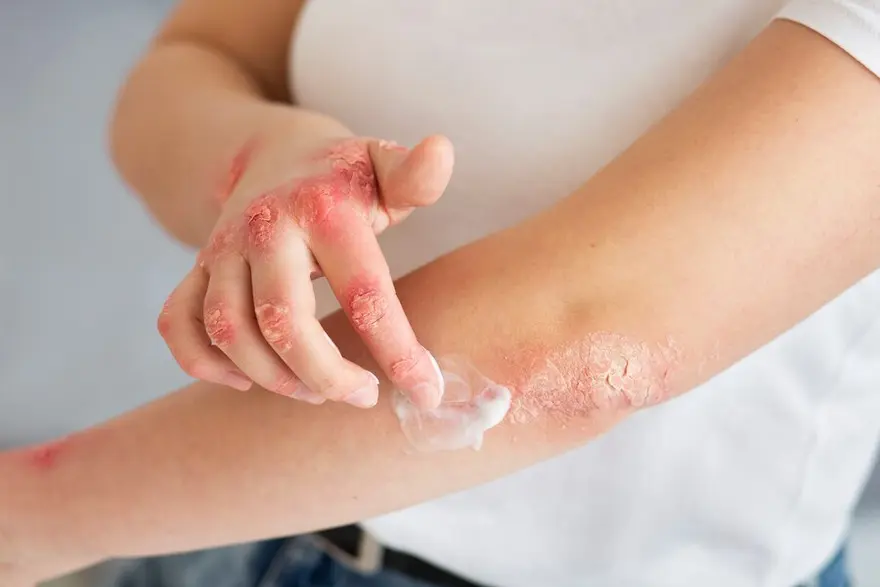
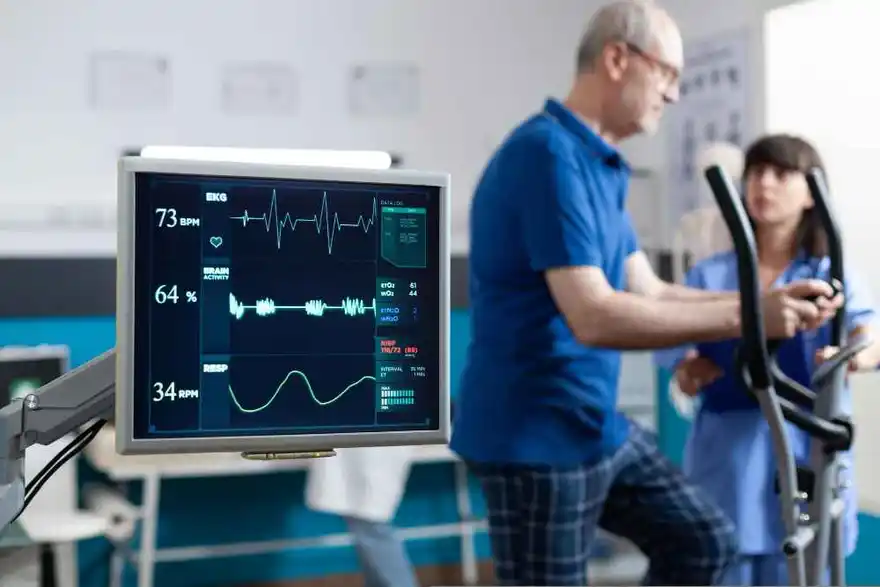



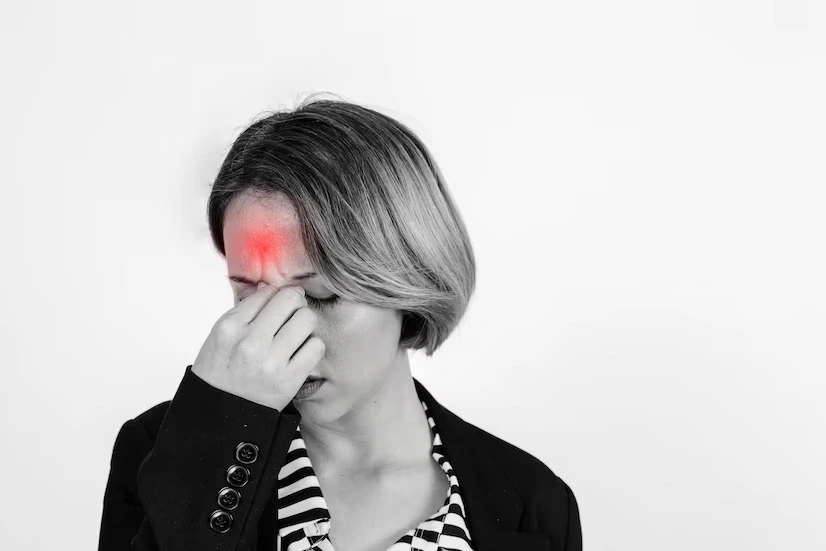
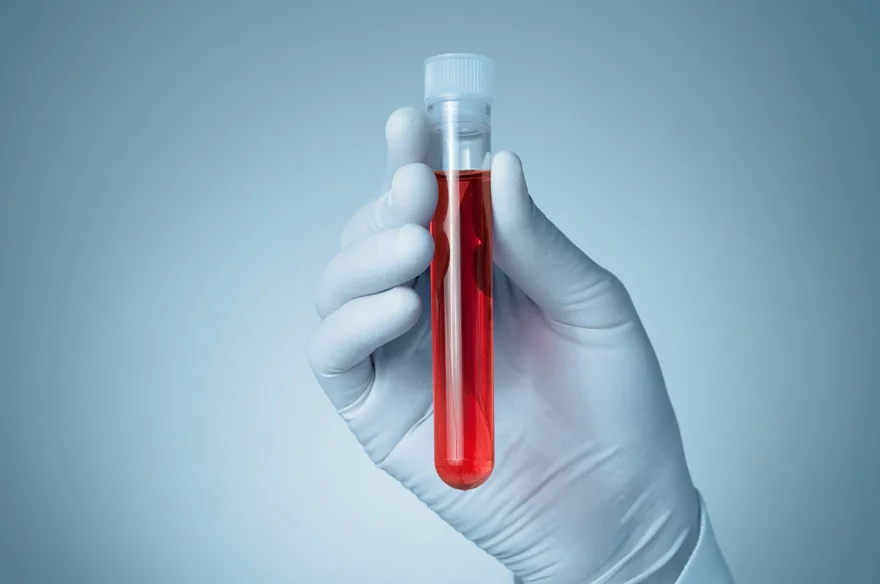
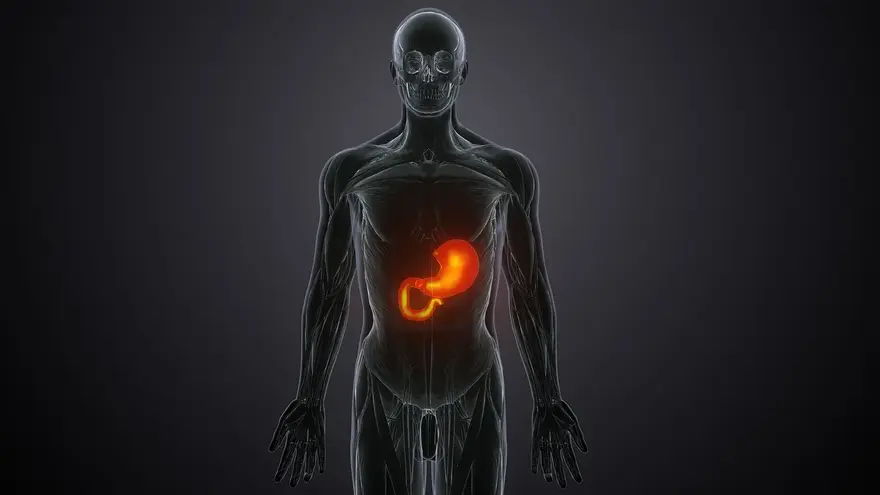
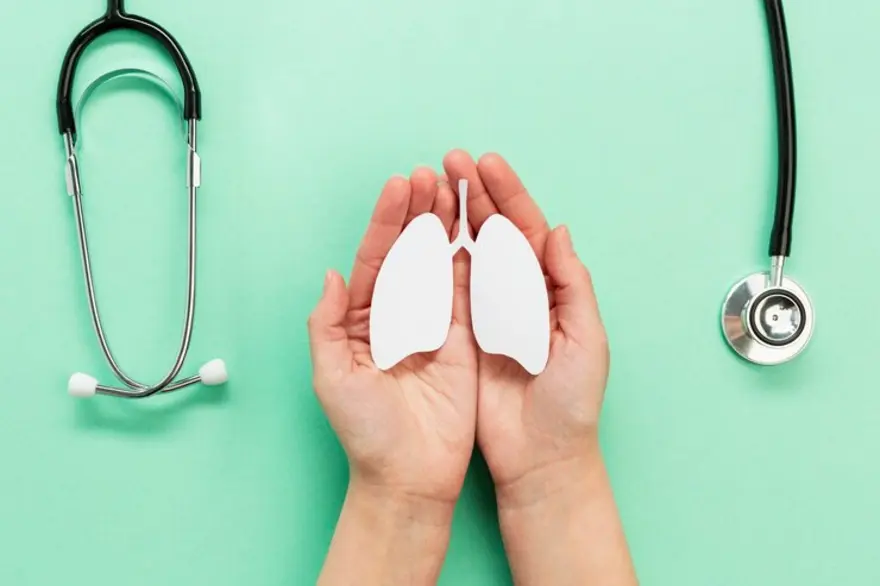








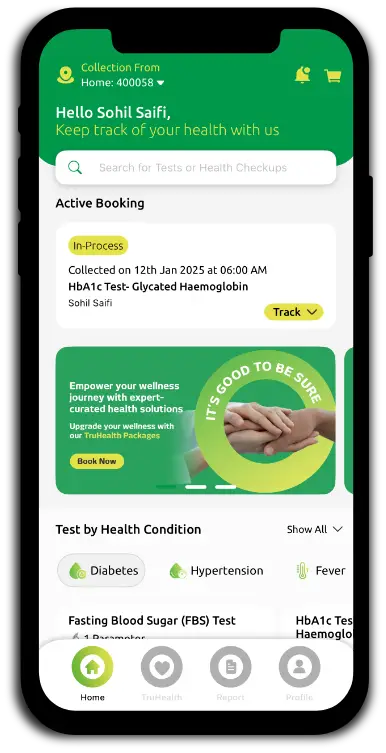
 WhatsApp
WhatsApp